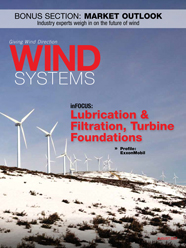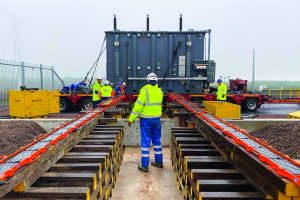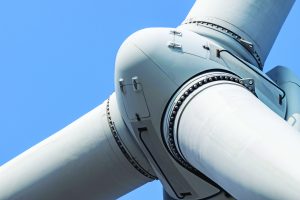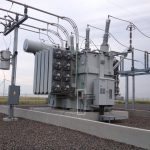When wind turbines go down due to equipment failure or maintenance issues, the resulting unplanned shutdowns and time-consuming maintenance fixes can exact a heavy toll. When such incidents occur, wind farms must deal with exorbitant crane mobilization expenses, lost energy production, soaring costs per kilowatt-hour, and untimely delays in obtaining replacement parts in a burgeoning industry where demand for necessary components routinely outstrips supply. Onshore and particularly offshore, anything that can prevent a service trip will help boost overall wind-turbine return on investment (ROI).
Ultimately, the reliability of equipment stands tall as a central challenge for wind-farm operators. This challenge extends to the rolling bearings at all points in wind turbines, whose proper lubrication is essential for optimized performance and longevity.
Supplying the right lubricant in the right quantity at the right time is critical, but adhering consistently to this practice can present challenges of its own: What is the most practical way to dispense the lubricant — manually or automatically? How can over- or under-greasing be avoided? Are lubricant points difficult to reach, or are they inaccessible? Will maintenance staff be placed in harm’s way?
How wind-farm operators approach and resolve these and similar questions can make all the difference in minimizing the need and costs of maintenance and promoting reliable performance of equipment.
Delivery systems
Whether grease or oil, lubricants for bearings in rotating machinery — wind turbines included — serve to prevent wear and damage between a bearing’s rolling and sliding contact surfaces, reduce friction and heat generation, help protect against corrosion, and keep out contaminants.
A lack of proper lubrication can bring a turbine to a standstill. Vibration, high mechanical loads, contamination, and moisture are all threats to turbine bearings. And improper lubrication certainly will take a toll on bearings: 36 percent of all premature bearing damage historically has been attributed to poor lubrication-related practices.

One of the most important steps on the road toward proper lubrication is deciding how to deliver lubricant effectively to all the lubrication points in a nacelle. A variety of manual-lubrication tools have been developed — some quite advanced and user-friendly — and grease guns rank high on the list.
A recent innovation in grease guns for wind farms uses a 12-volt lithium-ion battery for maximum power and efficiency with the capability to quickly deliver grease at up to 8,000 psi (551 bar). Its three-point base keeps the tool upright for user convenience and helps prevent dirt and debris from entering the motor. The tool is relatively lightweight and ergonomically constructed to help reduce operator fatigue and allow for easy access to tight areas. Such grease guns can further allow for secure hose storage and easy threading of the grease barrel by integrating a hose holder and tube guide.
As an alternative when hoses may get in the way, a handheld and rechargeable battery-driven grease gun combines portability with a user-friendly interface to maximize efficiency and accuracy. With such a tool, lubricant flow rates can be precisely adjusted and an integrated grease meter dispenses the proper amount of lubricant to prevent possible over- or under-greasing. A visual display assists workers by showing battery charge level, amount of grease dispensed, pump/motor speed, and even blocked lubrication points.
But what if lubrication points are difficult and/or unsafe to access? What if too much or too little lubricant is dispensed? When manual lubrication will be impractical for these or any other reasons, single-point or fully automatic centralized lubrication systems can deliver the goods. Systems for various locations in a wind turbine have been engineered to dispense exact and clean quantities of appropriate lubricant where and when required.

SKF USA)
Automatic delivery of lubricant will surely lift a heavy burden from the shoulders of the maintenance staff.
According to industry averages, 10 to 20 percent of the uptower time involved in servicing a turbine is spent on re-lubrication (technicians crawling around in the cramped nacelle and hub to grease lubrication points numbering from 10 to more than 80 with several different greases in each turbine). And, in the case of conventional manual lubrication methods, over- or under-greasing (leading to potential failure) always is an unwanted possibility; lubrication intervals may be sporadic or ill timed; contaminants can inadvertently be introduced, and equipment performance may be compromised.
With an automatic lubrication system, bearing life can be lengthened by delivering frequent, correct amounts of grease to each bearing. Precisely controlled amounts of lubricant — dispensed at pre-set intervals — keeps bearings coated and enables them to perform to their rated capacity.
A systems overview
Single-point automatic lubricators. These inject the precise and correct amounts of contaminant-free grease and often will be used for the re-lubrication of pitch bearings and other bearings in moving parts. They inherently minimize the risks of over- or under-greasing and can supply lubricant 24/7 for periods up to a year as governed by a pre-set automatic timer.
Single-line lubrication systems. In this centralized configuration, a central pump station automatically delivers lubricant through a single supply line to a lubricant metering device. Each metering device serves one lubrication point and can be adjusted to deliver the precise amount of required grease or oil. A single-line system can pump long distances and within a wide temperature range. Components in corrosion-resistant designs will especially benefit offshore applications.

Progressive lubrication systems. These dispense small measured amounts of lubricant at frequent and intermittent intervals. The grease flow created by the system’s pump is proportioned by progressive metering devices and distributed to each bearing according to need. Metered quantities of lubricant are fed progressively in predetermined ratios from master feeders to the lube points. The lubricant does not leave the respective feeder until the preceding one has discharged its volume.
If a lube point does not receive any lubricant, regardless of the reason, or if a secondary feeder is blocked, the entire lubrication cycle is interrupted, and the system will provide a signal to alert operators to the problem. Integrated system control and monitoring is another plus for this and other centralized systems.
Tips for success
Centralized lubrication systems can be applied to all bearings at a turbine’s rotor shaft, blade pitch, and azimuth positions, as well as non-rotating applications inside the turbine. Stationary systems can supply grease accurately to main shaft, generator, blade, and yaw bearings. For the rotating blade bearings, lubrication systems can be equipped with a follower plate.
Decision-making for the most appropriate lubrication system will depend, in general, on the application and, in particular, on a range of other parameters, such as the operating conditions (variations in the operating temperature and lubricant viscosity), accuracy requirements for lubricant quantities, turbine system geometry (size, dimensions, and symmetry), and monitoring demands, among others.
When planning, installing, and subsequently implementing a centralized lubrication system inside a wind turbine, these guidelines can help:
- Determine the number of lube points.
- Choose the proper lubricant for the temperature, speed, and load conditions.
- Calculate appropriate dispense rates and quantities for the application.
- Choose pumps consistent with the type of actuation and system capacity.
- Consider monitoring as an integral requirement for the lubrication system.

After a lubrication system is up and running, measurable benefits can be realized at every turn:
- No more chances of over- or under-greasing.
- Lubricant consumption can be brought into line with requirements.
- More informed and timely lubricant purchasing decisions can be made.
- Lubrication-related breakdowns can be reduced.
- Turbine productivity, reliability, and availability can be improved.
In the case of existing equipment in the wind-turbine aftermarket, generally populated with older and/or smaller machines, operators have the option to upgrade their lubrication programs with the latest advanced technologies. It’s never too late.
Regardless of application or system, close attention should always be paid to the specific type of lubricant required for the turbine main shaft, yaw, and blades. There is no “universal” one-size-fits-all lubricant solution for every application. The proper grease will provide proper lubrication whether the turbine is operating or in standstill mode, installed onshore or offshore, or in extreme temperatures or conditions.
One more guideline on the path to sustained success: partnering with a knowledgeable specialist can help in implementing the best lubrication practices for any installation, new or old.































